The 2021 Nobel Prize will be announced soon, will this "unattractive" looking Japanese man win the prize?
Every year the announcement of the Nobel Prize generates worldwide attention, and this year is no exception!

From today until October 10th, the Nobel prizes will be announced one after another. Among them, the Japanese are rising in popularity.
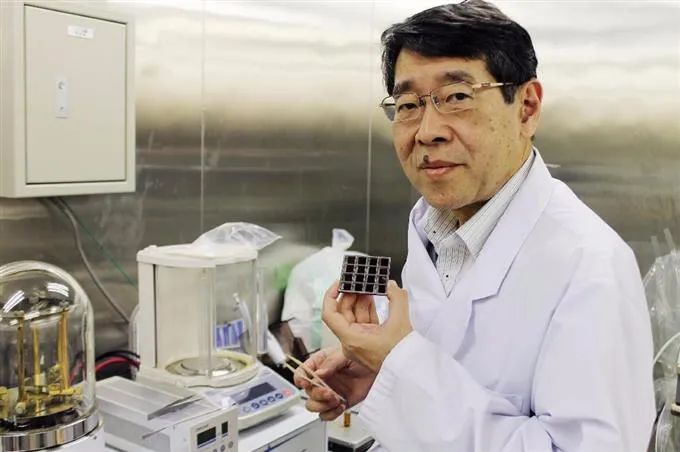
He is one of the strong candidates for the Nobel Prize in Chemistry, Professor Riku Miyasaka, a Japanese researcher, for his invention "Efficient Energy Conversion with Calcium-Titanium Ore Materials", which may change the lives of all of us in the future.

Recently, with the shortage of coal and the rising price of coal, the matter of power restriction in China has raised many concerns. Normally electricity generation is generally done by converting water energy, thermal energy from fossil fuels (coal, oil, natural gas, etc.), nuclear energy, and solar, wind, geothermal, and ocean energy into electricity using power generation power plants.
Until the end of the 20th century, we also used mostly fossil fuels for power generation, but with the increasing depletion of fossil fuels and decreasing resources, we must use more renewable energy sources, such as: hydro, solar, wind, geothermal, ocean energy, etc. for power generation.

And Professor Riku Miyasaka's invention of calcium-titanium ore solar cells may make the future of renewable energy generation epoch-making.

Once the ultra-lightweight calcium titanite solar cells become popular, they will be very useful when we are out and about, or when we encounter disasters. The power station ...... In fact, such an initiative is already underway in Poland.

Recently, a Polish company has been the first to start selling calcium titanite solar cells, which look like a thin film from the outside, a technology that could make the earth a much easier place to live. This Professor Miyazaka has done very important work, and it can even be said that he has changed the history of solar power generation. Calcium titanite is expected to be rapidly applied in the BAPV-like market.
Chinese company Taisheng Micro-Nano, after more than 10 years of technology accumulation and 5 years of industrialization preparation, is about to make the first sales of flexible calcium titanium ore products in spring 2022.
With all this talk of exaggeration, what exactly is a calcium-titanium ore solar cell?
In the footage, Professor Miyasaka hands similar to "film" is calcium titanite solar cells, it can be bent at will, change form, and the thickness is only 0.13 mm.
However, the shocking is not only this, this calcium titanium solar cells not only in the sunny days, even in the cloudy days, rainy days can also rely on only a weak light to generate electricity.
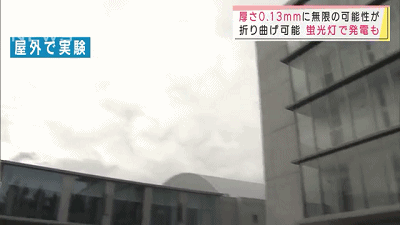
To show the reporters, Professor Miyasaka chose to conduct the test outside on a cloudy day, only to see that a very small piece of calcium titanite solar cell can easily drive the high-speed rotation of the plastic propeller.
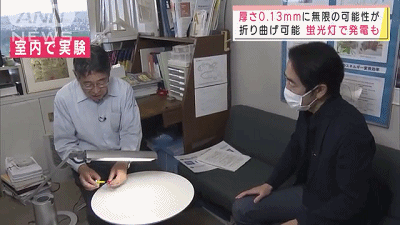
Even under daylight indoors, the calcium-titanium solar cells can continue to generate electricity to keep the propeller turning! Up to now, solar power generation has generally been set up on top of the roof of a house or on a flat surface for large-scale solar power generation, which is still a limitation for Japan, where there is very little flat land for large-scale solar power plants. However, with the development and application of calcium titanite solar cells, all problems can be solved! Because they can be used in a variety of places, and because they are translucent, they can even be installed on the walls of buildings or on glass.

也可以设置在屋内的许多场所,例如:桌子,椅子,以及到目前为止大家想都没有想过的地方。

In addition, because it is easy to carry, it can even be sewn onto clothing and used as a special power source.
Most importantly, through mass production, its cost can also be controlled at less than half of the current solar power panels, making it one of the cheapest renewable energy sources in the future.

In recent years, due to environmental degradation, climate change and disasters around the world, countries are desperately trying to transition to a decarbonized society, and this has led to intense development of technologies related to calcium titanite solar cells, as any country that can be the first to develop long-life, high-efficiency calcium titanite solar cells may have an advantage in the highly competitive new energy field.
Many scientists around the world are also working on chalcogenide solar energy, and there are at least 10,000 people in China who specialize in chalcogenide cells.
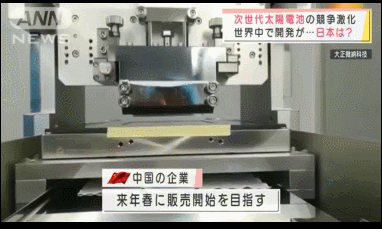
As a leader in flexible chalcogenide solar cells, Taisheng Micro-Nano has been setting new world records for chalcogenide solar cell efficiency for many years, and will begin official product sales in spring 2022, with the first products expected to be used in the BAPV-like market, IoT and 5G communication industries.
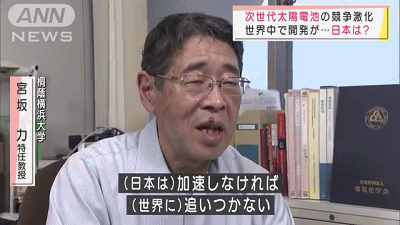
Related news
From December 3 to 5, 2025, Dazheng Micro-Nano has been invited to participate in the “2025 Toyota Tsusho Machinery Exhibition” with its flexible perovskite solar modules.
The 3rd Perovskite and BIPV Technology Innovation and Application Forum will be held from November 25 to 26, 2025, in Changzhou, Jiangsu Province. This forum will focus on breakthroughs in perovskite/BIPV photovoltaic building-integrated technologies, standardization systems, engineering practices, and market trends. It will bring together industry experts, corporate representatives, and scholars from research institutions to jointly explore new pathways for industry development.
Recently, Dazheng Weina (Jiangsu) Technology Co., Ltd. (hereinafter referred to as "Dazheng Weina") successfully secured over 100 million yuan in its Series A3 funding round. Notably, the "Future Creation No. 3 Fund" from SPARX Asset Management Co., Ltd.—one of Japan's largest venture capital funds—led the investment, while funds under Guoxing Investment continued to increase their stake.








